
Our Koh Tao Diving Boat
Welcome To The Mojo Divers Boat We have had the same Koh Tao diving boat for the last 9 years 🙂 It is the “engine”
Matthew Metcalf
28/11/2023
Koh Tao, a tropical paradise nestled in the Gulf of Thailand, is renowned for its crystal-clear waters, vibrant coral reefs, and diverse marine life. While many backpackers and holiday makers travel to this island throughout the year, diving in monsoon season introduces a unique and exhilarating twist to the underwater experience.
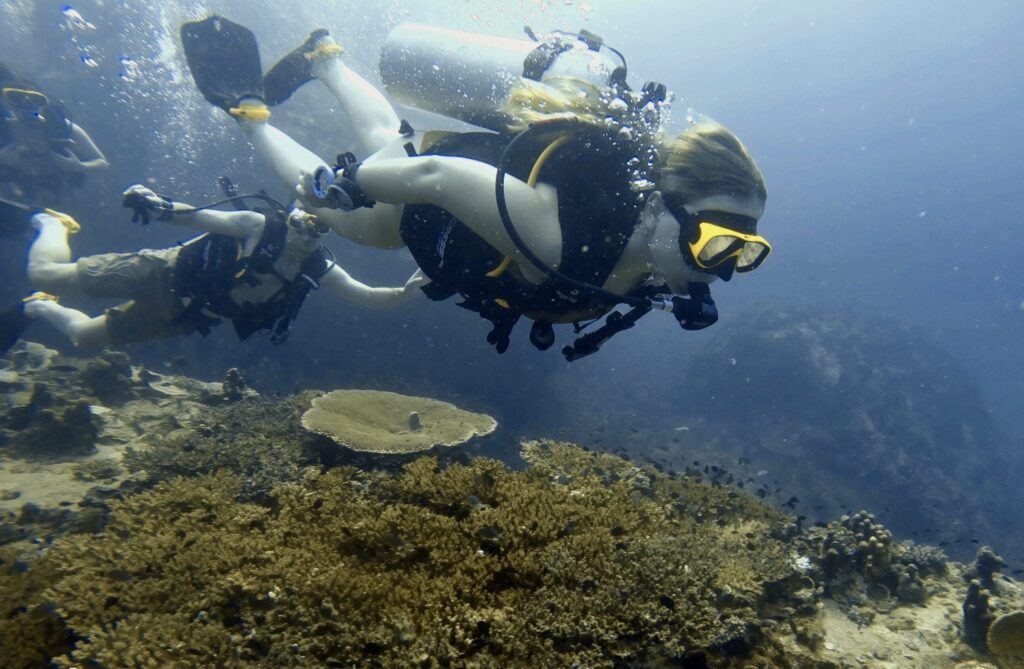
Here, we delve into the world of diving in the heavy rainfall of monsoon season on Koh Tao, exploring its challenges, rewards, and the magic that awaits beneath the surface. And you can decide if its worth booking your diving trip to Thailand during rainy season.
The monsoon season on Koh Tao typically spans from October to November, characterized by increased rainfall, occasional storms, and changing sea conditions.
Not to be confused with the traditional Thai monsoon which is June to September. The west coast of Thailand gets a lot of heavy rain and strong wind, Koh Tao on the east coast just gets the wind with amazing sunsets. We see the thunder clouds and lightning storms from the beach but we still go diving in monsoon.
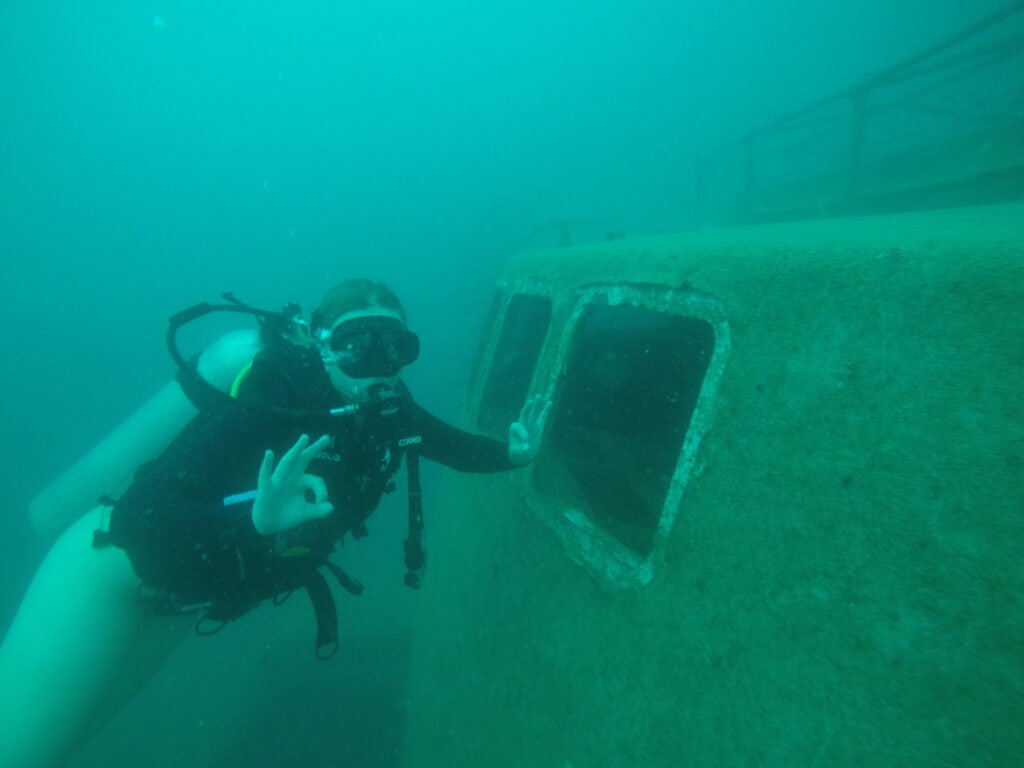
While some divers might be deterred by the weather, and think it is not possible to dive when it rains. Others are drawn to the island during this time for the chance to witness a different side of its underwater life.
The water temperature is still warm, 27-29C after the summer, but it will feel colder on the boat between dives.
One of the primary challenges of diving conditions during the monsoon season is the reduced visibility caused by the influx of rainwater and stirred-up sediment.
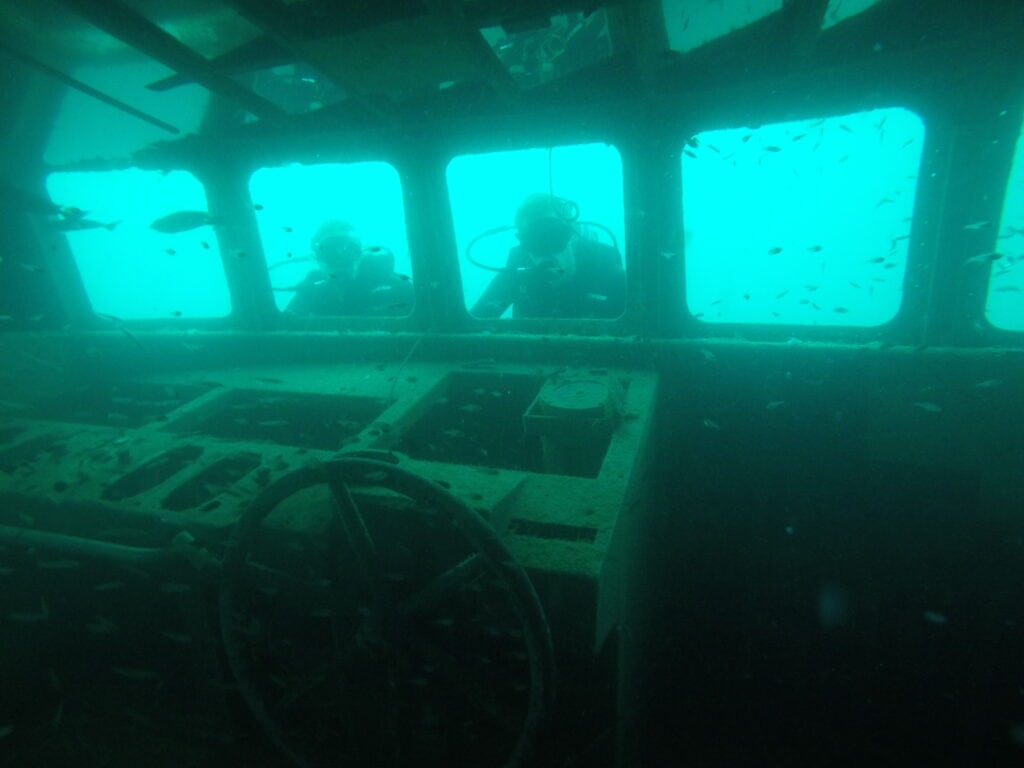
Divers accustomed to the clear waters of Koh Tao during the dry season may find themselves navigating murkier conditions, adding an element of mystery to each dive.
Monsoon winds can lead to stronger currents, providing an added challenge for divers. However, experienced divers often embrace the opportunity to hone their skills in navigating these conditions, making each dive a thrilling adventure.
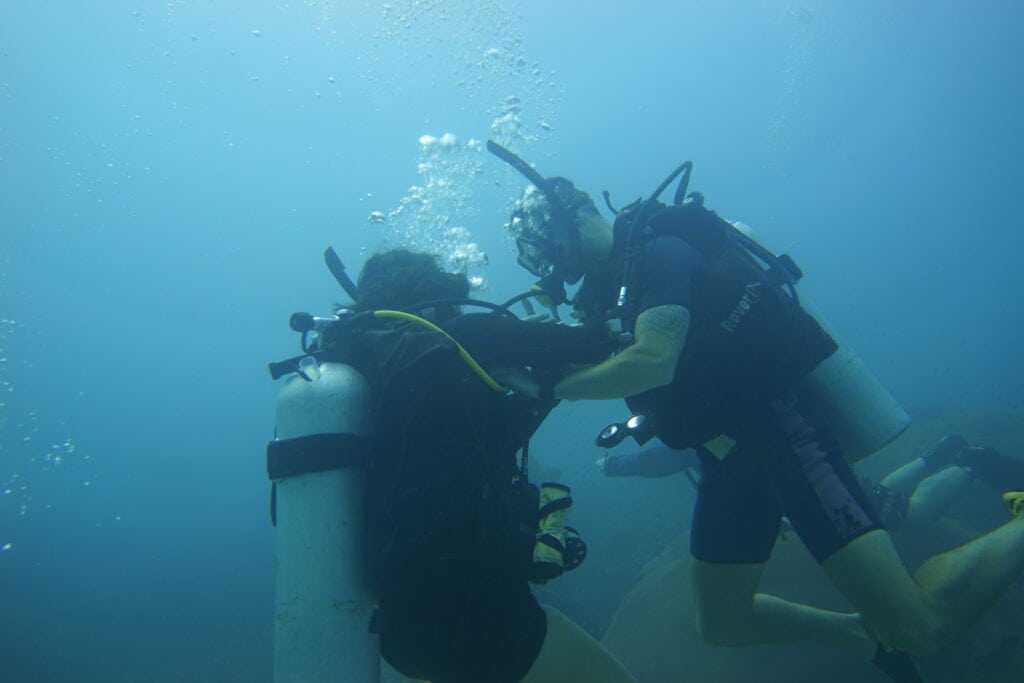
Due to the unpredictable weather conditions, dive centers may cancel or alter dive trips and schedules to ensure the safety of divers. Although it is very rare to cancel diving as we understand that customers have travel plans.
This can be disappointing for those planning an extensive dive itinerary, but it’s essential for maintaining a secure diving environment. After all, we all want to give you the best dive experience possible.
The monsoon season brings a surge of nutrients into the water, leading to increased plankton activity. While this might reduce visibility, it attracts a wealth of marine life, including whale sharks, rays, and various species of fish. Divers willing to brave the conditions may be rewarded with encounters with these majestic creatures.
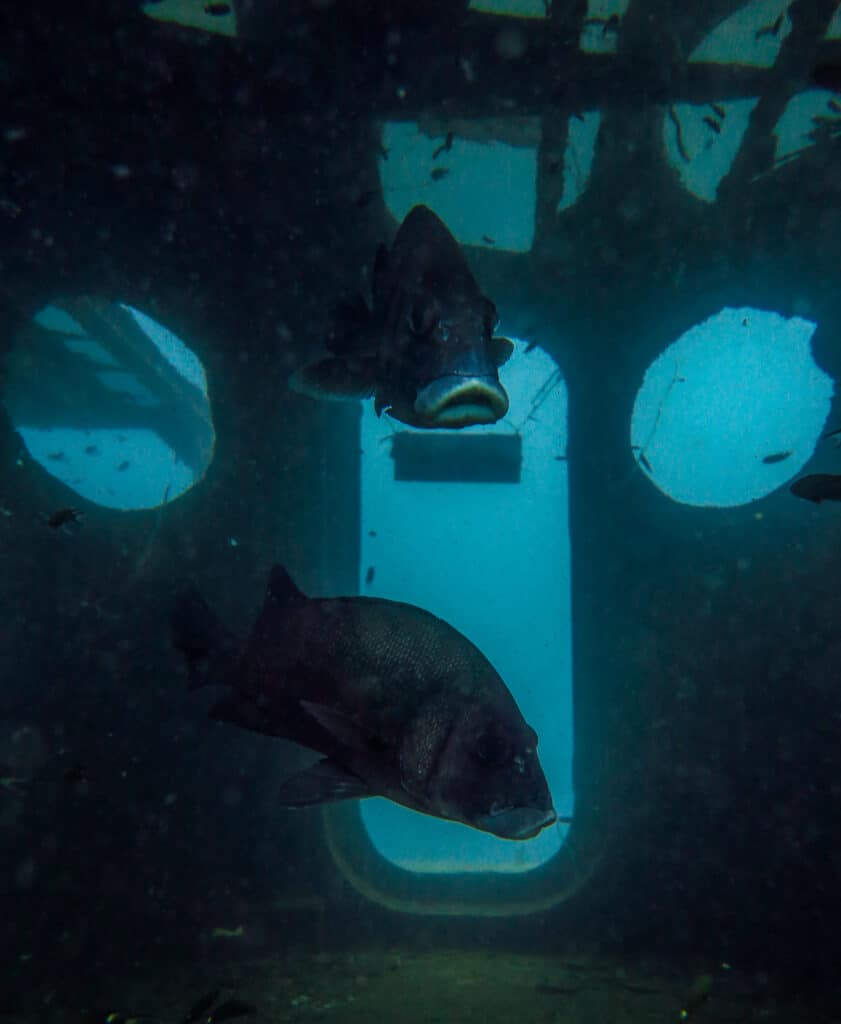
The changing weather patterns create dynamic underwater landscapes, with coral formations appearing even more vibrant against the darkness. Photographers often find that diving in monsoon season an opportune time to capture unique and dramatic shots.
With fewer tourists during the wet season, dive sites are often less crowded. Although this year, 2023, it has been busier than normal around the full moon parties.
This not only provides a more peaceful and intimate diving experience but also allows divers to explore sites that are typically bustling with activity during the dry season.
Divers should stay informed about weather conditions and heed the advice of local dive operators. Flexibility in scheduling is key, as dives may be rescheduled or altered for safety reasons.
Opting for dive centers with experienced instructors familiar with monsoon conditions is crucial. Their expertise ensures that divers receive proper guidance and are well-prepared for the challenges they may encounter.
Divers must be adaptable and open to the unique experiences that come with diving in rainy season. Flexibility in dive plans and a positive attitude contribute to a safer and more enjoyable diving experience.
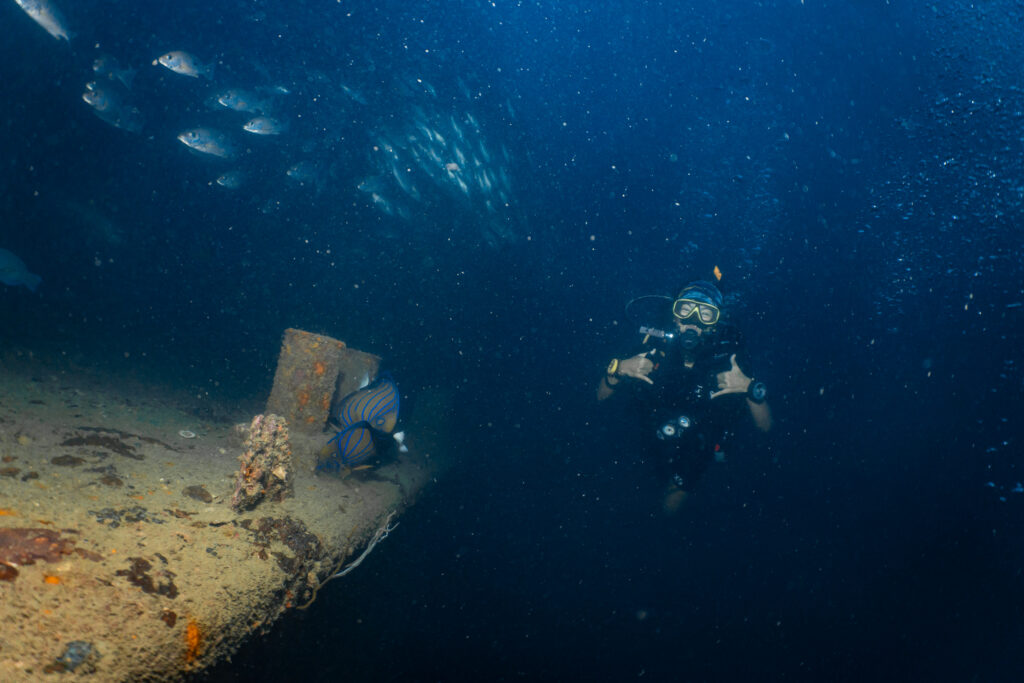
Diving in monsoon season on Koh Tao offers a different perspective of this renowned diving destination. While challenges exist, they are outweighed by the rewards of encountering thriving marine life, exploring unique underwater landscapes, and enjoying quieter dive sites.
How to get to Koh Tao? Still want to come to Koh Tao for diving in monsoon? Here’s how to get here.
For adventurous divers seeking a more intimate and unpredictable diving experience, the wet season on Koh Tao beckons with the promise of underwater magic waiting to be discovered. Contact one of our professional dive team for some realistic advice about diving course during the monsoon rain.
Find out more about the SSI diver training agency here: Dive SSI

Welcome To The Mojo Divers Boat We have had the same Koh Tao diving boat for the last 9 years 🙂 It is the “engine”
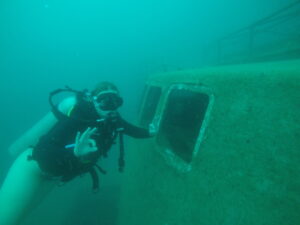
Exploring the Depths: Diving Adventures in the Monsoon Season on Koh Tao Koh Tao, a tropical paradise nestled in the Gulf of Thailand, is renowned

Wreck Specialty Course The scuba diving on Koh Tao has a couple of shipwrecks perfect for the Wreck Specialty Course. They are a great haven
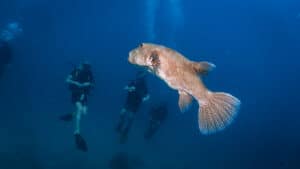
Koh Tao, a picturesque island in the Gulf of Thailand, Southeast Asia, has earned a well-deserved reputation as a scuba diver’s paradise. With its crystal-clear

Choosing the Right Dive Computer: A Comprehensive Guide Introduction to Choosing a Dive Computer 2024 Scuba diving is an exhilarating adventure that allows enthusiasts to
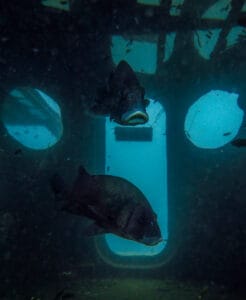
Night Diving Koh Tao So you’ve dived during the day? And don’t get me wrong, I’m sure it was an amazing experience, but if you’ve
A New Year's Dive into the Depths: Exploring Scuba Diving Paradise on Koh Tao...
Exploring the Underwater Wonderland: Christmas Diving on Koh Tao As the festive season approaches,...
Why Dive In Amazing Koh Tao Nestled in the Gulf of Thailand, Koh Tao,...